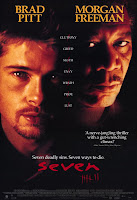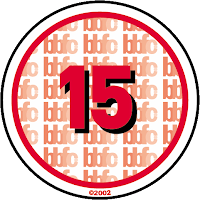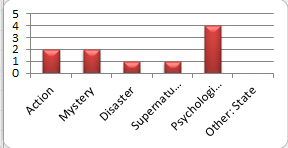Evaluation
1. In what ways does
your media product use, develop or challenge forms and conventions of real
media products?

A
lso in my original filming the way I planned it was very long so the use of dissolves was used to show a passage of time to create awareness of the protagonist’s whereabouts. During my editing I used the video effects of adjust->levels, with levels I am able to change the scene/environment with indicators of black, white, etc. I chose to differ the colour change in levels to a kind of the night vision look and I think it looks affective rather than have just having the original filming colour. My thriller develops the genre by combining it with the horror genre, by having conventions that belong in both genres; I incorporated a horror themed character because in thrillers you don’t usually see ghostly/ mysterious figures it’s more of action killers so I thought to bring it in to make it more intensive and uplifting. In my thriller I have incorporated the credits during the opening scenes of the film just like other thrillers such as Memento.
2. How does your
media product represent particular social groups?
For my media product, the
social group of the protagonist is represented as a young teenage boy which is
conventional in such thriller genres along with young teenage girl because they
are seen to be very easy to scare which is popular within the media industry,
such a film that contain this is “The Host” by Andrew Niccol.
Whereas the antagonist
social group is represented as more of a gothic figure who comes from the
depths of darkness which is the convention of a standard mysterious figure who doesn't appear as a threat until critical moments because they are meant to
seem scary within productions.
3. What kind of
media institution might distribute your media product and why?
4. Who would be the
audience for your media product?

5.
How
did you attract/address your audience?
6.
What
have you learnt about technologies from the process of constructing this
product?
7.
Looking
back at your preliminary task, what do you feel you have learnt in the
progression from it to the full product?
The preliminary task was very interesting in my opinion
because it consisted of the skills that real film production institutions use
to create their masterpieces and to learn what they do to come up with the nice
shots they make. In this task we had to
specifically learn about working as a group (little production team), operating
video cameras and filming sequences thinking about match on action and the
180-degree rule. Working as a group I have learn’t that people have different
strengths and weaknesses, like in production institiutions the workers have
their specifically chosen jobs because that is their specialitity, e.g. film
crews know how to operate the huge camera’s they use and how they work whereas
sound crews know how to use the audio technology works. So people in my group
had different abilities like for me I
found working with the camera is a lot
easier than using the macs where someone else knew more about operating the macs
than filming. I found operating the video cameras relatively because at home I
know how to use our own which assisted me with the significant skills I needed
to be able to work quickly and carefully. The camera had different buttons which
did different jobs so there was one which had a red dot on the top symbolising
the record button, another button I had to move light to right to be able get
close ups and longshots. Also with the camera we had to learn about the
different angles and shots we could
incorporate which meant we were really only had to maneuver the camera to get
them. The record and zoom buttons were the main two we used to get the footage
because really we used the macs to get other effects. With filming the
sequences we had to focus on the 180 degree rule and match on action shots,
match on action is where the camera focuses on an object from two different
angles and the 180 degree rule is where you imagine a lin splitting a scene and
you can only film at 180 degrees in that area- going over the limit is called
crossing the line, I have learn’t these rules to ensure I can make a good
production.














